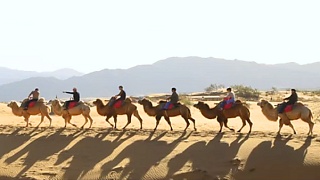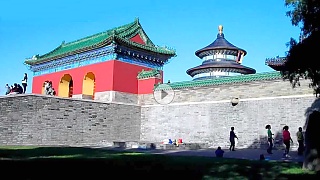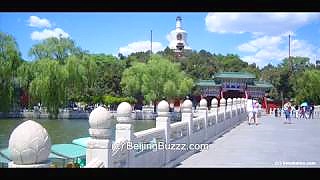With Nick in China ...
[640],shadow=true,start=,stop=Visitor guide to YinChuan, capital of NingXia province
Getting There
By Air: YinChuan Hedong International Airport (INC) is well-connected with major Chinese cities. The airport is about 25 kilometers from the city center, and you can take a taxi or airport shuttle bus to your destination.
By Train: YinChuan Railway Station offers regular train services to various cities across China, including Beijing, Xi'an, and Lanzhou. The high-speed train network makes travel convenient and efficient.
By Bus: Long-distance buses connect YinChuan with other cities in NingXia and neighboring provinces. The YinChuan Long-Distance Bus Station is the main hub for these services.
Accommodation
YinChuan offers a range of accommodation options, from luxury hotels to budget hostels. Some recommended options include:
- Luxury: Kempinski Hotel YinChuan, YinChuan International Convention Centre Hotel
- Mid-Range: Holiday Inn Express YinChuan Downtown, YinChuan XiYue International Hotel
- Budget: YinChuan Youth Hostel, various local guesthouses
Attractions and Activities
Historical and Cultural Sites
- Western Xia Tombs: Located about 35 kilometers from YinChuan, these ancient tombs are the resting place of the emperors of the Western Xia Dynasty. The site offers a fascinating glimpse into the history and culture of the dynasty.
- NingXia Museum: This museum showcases the rich history and culture of NingXia, with exhibits ranging from ancient artifacts to modern art.
- HaiBao Pagoda: Also known as the North Pagoda, this ancient Buddhist pagoda is one of the oldest and most well-preserved structures in YinChuan.
Natural Attractions
- Sand Lake: A beautiful nature reserve located about 56 kilometers from YinChuan, Sand Lake is known for its stunning desert and wetland landscapes. Visitors can enjoy bird watching, boat rides, and sand dune activities.
- Helan Mountains: These mountains offer breathtaking scenery and numerous hiking trails. The region is also home to ancient rock carvings and the Helan Mountain Scenic Area.
Modern Attractions
- Drum Tower: A central landmark in YinChuan, the Drum Tower is surrounded by bustling markets and streets lined with shops and restaurants.
- Zhongshan Park: A popular urban park that offers a peaceful escape with its beautiful gardens, lakes, and recreational facilities.
Dining and Local Specialties
YinChuan boasts a diverse culinary scene, with a mix of traditional NingXia cuisine and Hui Muslim specialties. Some must-try dishes include:
- Lamb Kebabs: A local favorite, these skewered and grilled lamb pieces are seasoned with a blend of spices.
- Hand-Pulled Noodles: Known locally as "Lamian," these noodles are served in a flavorful broth with beef or lamb.
- Eight-Treasure Tea: A traditional NingXia beverage made with a mix of tea leaves, dried fruits, and herbs.
Shopping
- Night Markets: Explore the bustling night markets in YinChuan for a variety of street food, local handicrafts, and souvenirs.
- Shopping Malls: Modern shopping centers like Wanda Plaza and YinChuan Mall offer a wide range of international and local brands.
- Local Handicrafts: Look for traditional NingXia crafts such as Helan stone carvings, wool products, and Hui embroidery.
Tips for Visitors
- Best Time to Visit: The best times to visit YinChuan are during spring (April to June) and autumn (September to October) when the weather is mild and pleasant.
- Clothing: Dress in layers to accommodate temperature changes. Summers can be hot, and winters can be quite cold, so pack accordingly.
- Language: While Mandarin is the official language, some locals may speak the NingXia dialect. It's helpful to have a translation app or phrasebook if you don't speak Mandarin.
- Respect Local Customs: NingXia has a significant Hui Muslim population, so be respectful of local customs and traditions, especially when visiting mosques and Hui neighborhoods.
Conclusion
YinChuan, the capital of NingXia Province, offers a rich tapestry of history, culture, and natural beauty. Whether you're exploring ancient tombs, hiking in the mountains, or savoring local cuisine, YinChuan promises an unforgettable experience for every traveler.

 YinChuan, capital of NingXia province
YinChuan, capital of NingXia province















